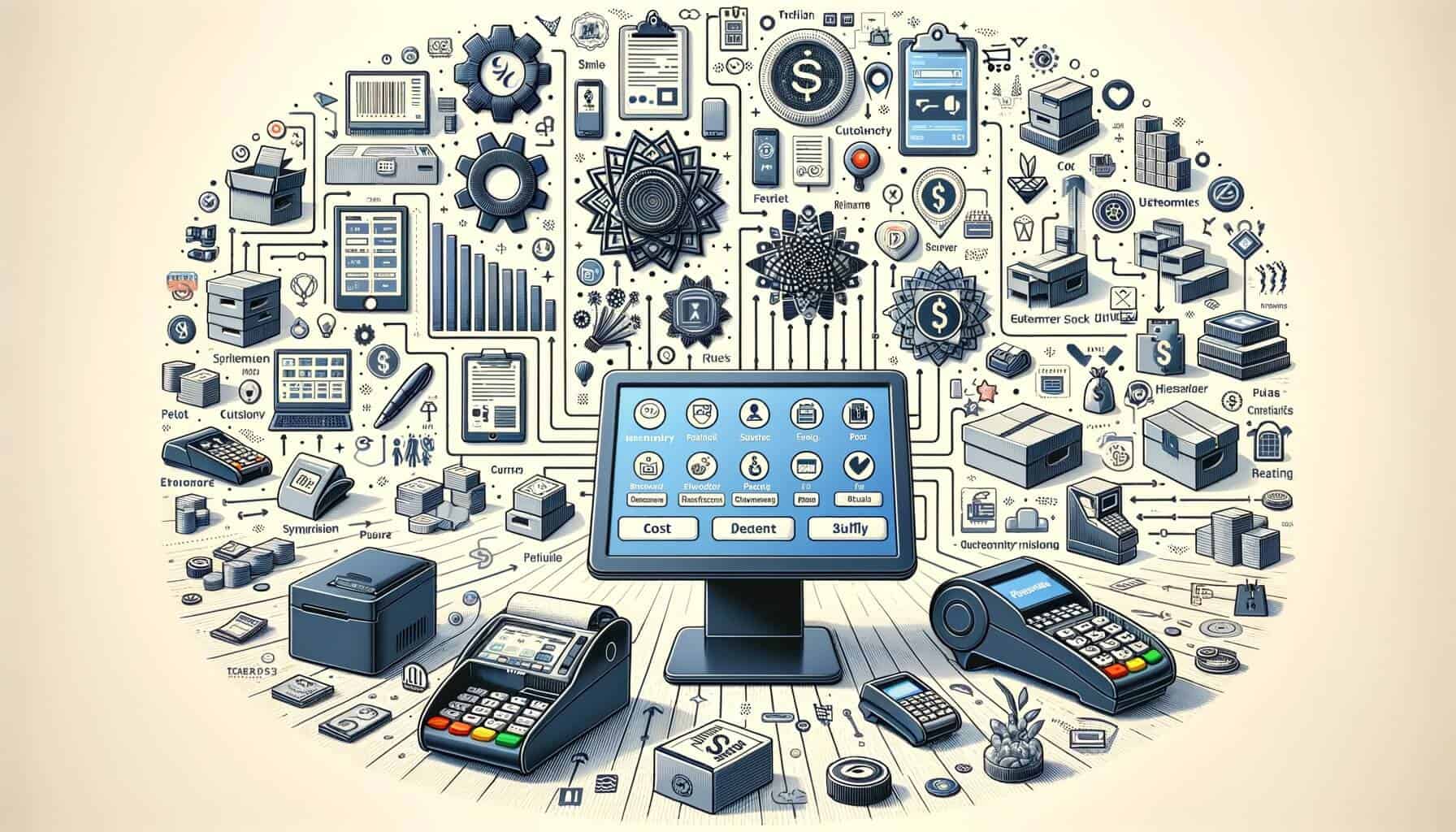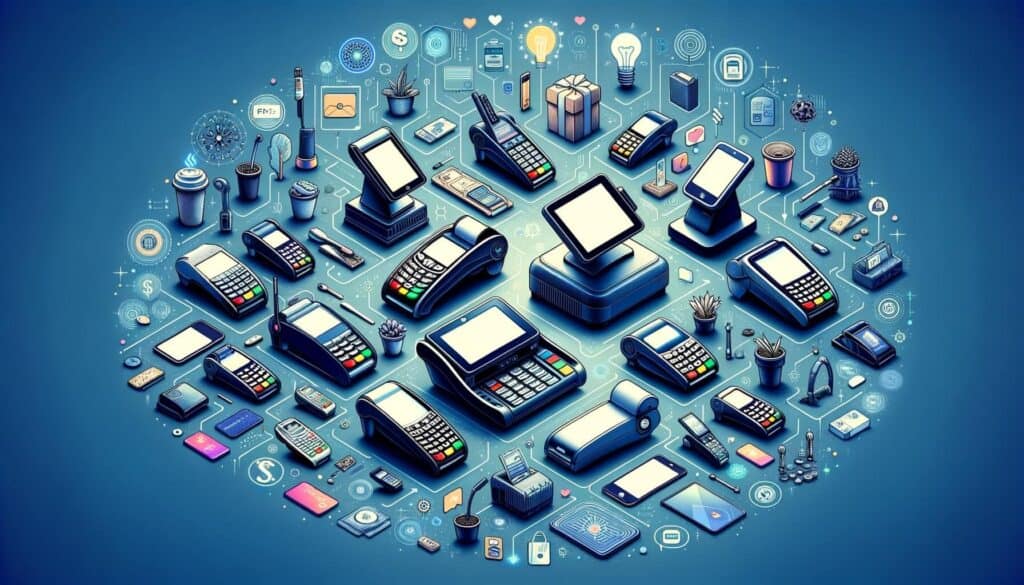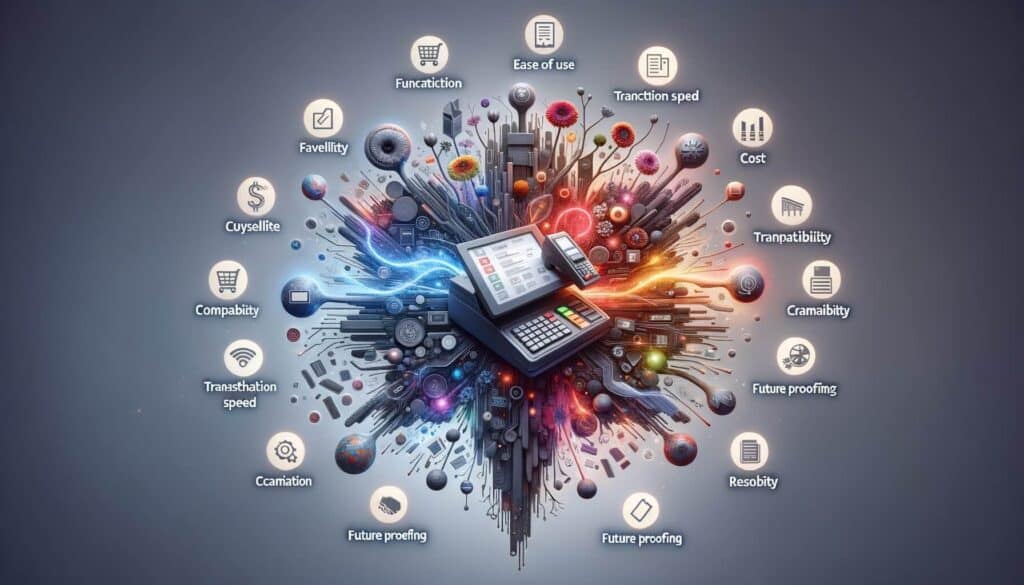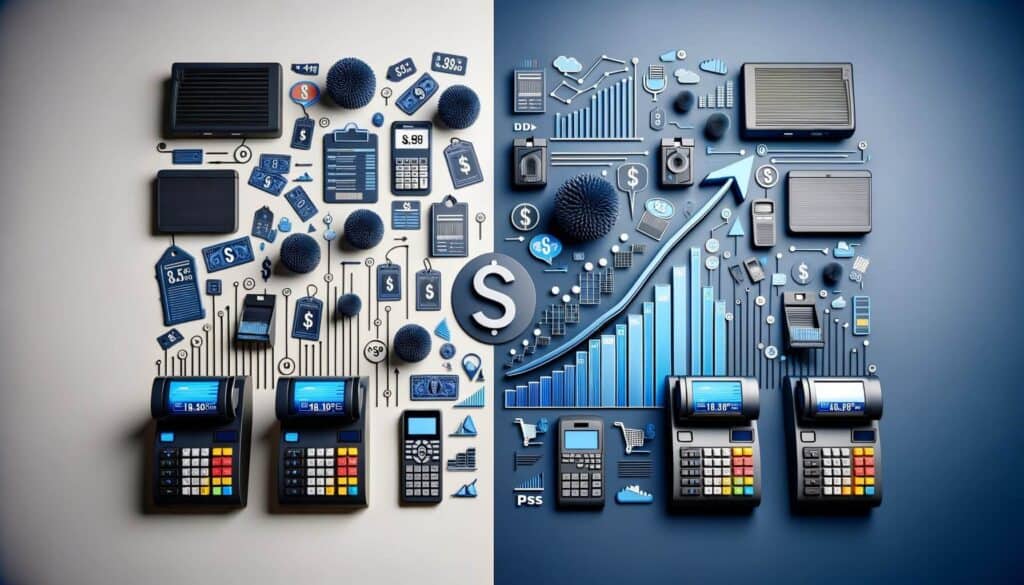
By Mollie Mills April 26, 2025
In today’s fast-paced business environment, having an efficient and reliable point of sale (POS) system is crucial for the success of any retail or hospitality establishment. A POS system is a combination of hardware and software that allows businesses to process transactions, manage inventory, and track sales.
With the right POS system in place, businesses can streamline their operations, improve customer service, and make informed decisions based on real-time data.
Understanding the Different Types of POS Systems

Before diving into the process of choosing a POS system, it’s important to understand the different types available in the market. There are three main types of POS systems: traditional, cloud-based, and mobile.
1. Traditional POS Systems: Traditional POS (Point of Sale) systems consist of on-premise hardware and software that are installed and maintained by the business. These systems typically include a cash register, barcode scanner, receipt printer, and a computer terminal. While traditional POS systems offer stability and security, they can be expensive to set up and require ongoing maintenance.
2. Cloud-Based POS Systems: Cloud-based POS systems, also known as Software-as-a-Service (SaaS) POS systems, are hosted on remote servers and accessed through the internet. These systems offer businesses the flexibility to access their data from anywhere, as long as they have an internet connection. Cloud-based POS (Point of Sale) systems are typically more affordable and require less upfront investment compared to traditional systems. They also offer automatic software updates and data backups.
3. Mobile POS Systems: Mobile POS systems are designed to run on smartphones or tablets, allowing businesses to process transactions on the go. These systems are particularly popular in industries such as food trucks, pop-up shops, and events. Mobile POS (Point of Sale) systems offer convenience and mobility, but they may have limited functionality compared to traditional or cloud-based systems.
Factors to Consider When Choosing a POS System

Now that you have a basic understanding of the different types of POS systems, it’s time to consider the factors that will help you choose the right system for your business. Here are some key factors to consider:
1. Business Type and Size: The first step in choosing a POS (Point of Sale) system is to assess your business type and size. Different industries have specific needs and requirements when it comes to POS systems.
For example, a restaurant may require features such as table management and kitchen printing, while a retail store may need inventory management and barcode scanning capabilities. Consider the specific needs of your business and choose a POS system that caters to those needs.
2. Scalability: It’s important to choose a POS system that can grow with your business. As your business expands, you may need to add more registers, locations, or users to your POS (Point of Sale) system. Make sure the system you choose can accommodate your future growth without requiring a complete overhaul.
3. Integration with Existing Systems: If you already have other systems in place, such as an accounting software or an e-commerce platform, it’s important to choose a POS system that can seamlessly integrate with these systems. Integration allows for smooth data flow between different systems, eliminating the need for manual data entry and reducing the chances of errors.
4. User-Friendliness: A POS system is only as good as its usability. Look for a system that is intuitive and easy to use, both for you and your staff. A complicated and clunky system can lead to frustration and errors, which can negatively impact customer service and efficiency.
5. Security: With the increasing threat of data breaches and cyber attacks, security should be a top priority when choosing a POS (Point of Sale) system. Look for systems that offer encryption, tokenization, and other security measures to protect sensitive customer data. Additionally, ensure that the system is Payment Card Industry Data Security Standard (PCI DSS) compliant.
Evaluating Key Features and Functionality

Once you have assessed your business needs and goals, it’s time to evaluate the key features and functionality of different POS (point of sale) systems. Here are some important features to consider:
1. Inventory Management: Effective inventory management is crucial for any retail business. Look for a POS system that offers features such as real-time inventory tracking, automated reordering, and stock alerts. The system should also allow you to easily manage variations in products, such as different sizes or colors.
2. Sales Reporting and Analytics: A good POS system should provide you with detailed sales reports and analytics to help you make informed business decisions. Look for features such as sales by product, sales by category, and sales by employee. The system should also allow you to generate custom reports and export data for further analysis.
3. Customer Relationship Management (CRM): Building strong customer relationships is essential for business success. Look for a POS system that offers CRM features such as customer profiles, purchase history, and loyalty programs. The system should allow you to easily track customer information and preferences, and provide personalized service.
4. Integration with Payment Processors: Seamless integration with payment processors is important for a smooth checkout experience. Look for a POS system that supports multiple payment options, such as credit cards, debit cards, mobile payments, and gift cards. The system should also be compatible with popular payment processors to ensure secure and reliable transactions.
5. Employee Management: If you have multiple employees, it’s important to choose a POS system that offers employee management features. Look for features such as employee time tracking, shift scheduling, and performance tracking. The system should also allow you to set user permissions and access levels to ensure data security.
Comparing Pricing and Affordability

When it comes to choosing a POS system, pricing is an important consideration. However, it’s important to look beyond the initial cost and consider the long-term value and return on investment (ROI) of the system. Here are some factors to consider when comparing pricing:
1. Upfront Costs: Different POS systems have different pricing models. Some systems require a large upfront investment for hardware and software licenses, while others offer a subscription-based model with a monthly fee. Consider your budget and cash flow to determine which pricing model is more suitable for your business.
2. Ongoing Costs: In addition to the upfront costs, consider the ongoing costs associated with the POS system. These may include monthly subscription fees, transaction fees, and support fees. Make sure to factor in these costs when comparing different systems.
3. Scalability: Consider the scalability of the POS system and how it will impact your costs as your business grows. Some systems charge additional fees for adding more registers, locations, or users. Make sure to choose a system that can accommodate your future growth without incurring excessive costs.
4. Value-added Services: Some POS providers offer value-added services such as 24/7 customer support, software updates, and data backups. While these services may come at an additional cost, they can provide peace of mind and save you time and effort in the long run.
Researching and Selecting Reputable POS Providers
Once you have a clear understanding of your business needs, goals, and budget, it’s time to research and select reputable POS providers. Here are some steps to follow:
1. Read Reviews and Testimonials: Start by reading reviews and testimonials from other businesses that have used the POS systems you are considering. Look for feedback on the system’s ease of use, reliability, customer support, and overall satisfaction. Websites such as Capterra, G2, and Trustpilot can be valuable resources for finding unbiased reviews.
2. Request Demos and Trials: Most POS providers offer demos or free trials of their systems. Take advantage of these opportunities to get hands-on experience with the systems you are considering. Pay attention to the system’s user interface, speed, and overall performance. Make sure to involve your staff in the evaluation process to get their feedback as well.
3. Check References: Ask the POS providers for references from businesses that are similar to yours in terms of size and industry. Contact these references to get firsthand feedback on their experience with the system and the provider’s customer support.
4. Consider Industry-Specific Solutions: Some POS providers specialize in specific industries, such as restaurants, retail, or hospitality. Consider choosing a provider that has expertise and experience in your industry, as they are more likely to understand your specific needs and provide tailored solutions.
Implementing and Integrating the POS System
Once you have selected a POS system and provider, it’s time to implement and integrate the system into your business operations. Here are some steps to follow:
1. Plan the Implementation: Before implementing the POS system, create a detailed plan that outlines the steps and timeline for the implementation process. Assign responsibilities to different team members and ensure that everyone is aware of their roles and tasks.
2. Set Up Hardware and Software: If you have chosen a traditional POS system, you will need to set up the hardware and install the software. Follow the manufacturer’s instructions and ensure that all components are properly connected and functioning.
3. Import Data: If you have existing data, such as customer information or inventory data, you will need to import it into the new POS system. Make sure to clean and organize the data before importing it to ensure accuracy.
4. Train Your Staff: Proper training is crucial for the successful adoption of a new POS system. Provide comprehensive training to your staff on how to use the system, including features such as processing transactions, managing inventory, and generating reports. Consider providing ongoing training and refresher courses to ensure that your staff is fully proficient in using the system.
5. Test and Troubleshoot: Before going live with the new POS system, conduct thorough testing to ensure that everything is working as expected. Test different scenarios, such as processing transactions, managing inventory, and generating reports. Identify and address any issues or glitches that arise during the testing phase.
Training and Support for Your Staff
Even with the most user-friendly POS system, proper training and ongoing support are essential for maximizing its benefits. Here are some tips for providing training and support to your staff:
1. Comprehensive Initial Training: Provide comprehensive initial training to your staff on how to use the POS system. Cover all the key features and functionality, and ensure that your staff is comfortable with using the system for their day-to-day tasks.
2. Ongoing Training: Offer ongoing training and refresher courses to ensure that your staff stays up to date with the system’s features and any updates or enhancements. This can be particularly important if you have a high turnover rate or if you introduce new features or processes.
3. User Manuals and Documentation: Provide user manuals and documentation that outline the step-by-step processes for using the POS system. Make sure these resources are easily accessible to your staff, either in print or digital format.
4. Dedicated Support Team: Ensure that you have a dedicated support team that can assist your staff with any questions or issues they may have with the POS system. This can be in the form of an in-house support team or a support hotline provided by the POS provider.
5. Regular Feedback and Communication: Encourage your staff to provide feedback on the POS system and any challenges they may be facing. Regularly communicate with your staff to address any concerns or suggestions they may have. This will help improve the overall user experience and ensure that your staff feels supported.
Frequently Asked Questions (FAQs)
Q1. What is a POS system?
Answer: A POS system is a combination of hardware and software that allows businesses to process transactions, manage inventory, and track sales. It typically includes components such as a cash register, barcode scanner, receipt printer, and a computer terminal.
Q2. What are the different types of POS systems?
Answer: There are three main types of POS systems: traditional, cloud-based, and mobile. Traditional POS systems consist of on-premise hardware and software, while cloud-based POS systems are hosted on remote servers and accessed through the internet. Mobile POS systems run on smartphones or tablets.
Q3. How do I choose the right POS system for my business?
Answer: To choose the right POS system for your business, consider factors such as your business type and size, scalability, integration with existing systems, user-friendliness, and security. Assess your business needs and goals, evaluate key features and functionality, and compare pricing and affordability.
Q4. What features should I look for in a POS system?
Answer: Some important features to look for in a POS system include inventory management, sales reporting and analytics, customer relationship management (CRM), integration with payment processors, and employee management.
Q5. How do I select a reputable POS provider?
Answer: To select a reputable POS provider, read reviews and testimonials, request demos and trials, check references, and consider industry-specific solutions. Look for providers that have positive customer feedback, offer reliable customer support, and have experience in your industry.
Conclusion
Choosing the right POS system is a critical decision for any business. By understanding the different types of POS systems, assessing your business needs and goals, evaluating key features and functionality, comparing pricing and affordability, and researching reputable POS providers, you can make an informed decision that aligns with your business requirements.
Implementing and integrating the POS system, along with providing comprehensive training and ongoing support to your staff, will ensure a smooth transition and maximize the benefits of the system. With the right POS system in place, you can streamline your operations, improve customer service, and make data-driven decisions to drive the